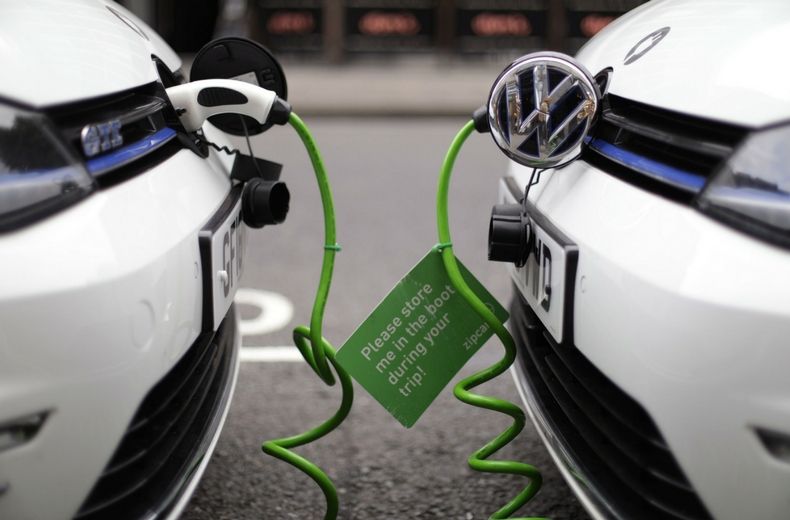
Cruising with Corn: Demystifying Ethanol-Powered Vehicle Engines
In an era where sustainability and environmental consciousness are paramount, the world of automotive engineering has been making remarkable strides. Among these innovations is the ethanol-powered vehicle engines, which has gained considerable attention in recent years. Ethanol, derived primarily from corn in the United States, has become a viable alternative to traditional gasoline, offering both environmental benefits and economic opportunities. In this article, we will delve deep into the realm of ethanol-powered vehicle engines, exploring their workings, advantages, and potential impact on the automotive industry.
The Science Behind Ethanol
Before we dive into the mechanics of ethanol-powered engines, it’s crucial to understand the science behind ethanol itself. Ethanol, also known as ethyl alcohol, is a renewable biofuel primarily derived from plant sources, including corn, sugarcane, and wheat. In the United States, corn is the predominant source of ethanol production.
The process begins with the fermentation of corn or other biomass materials. Yeast or bacteria are introduced to these materials, causing the sugars to break down into ethanol and carbon dioxide. The resulting ethanol is then purified to produce fuel-grade ethanol, typically referred to as E85 when blended with gasoline. E85 consists of 85% ethanol and 15% gasoline, making it suitable for use in flex-fuel vehicles (FFVs).
How Ethanol-Powered Engines Work
Ethanol-powered engines are not fundamentally different from traditional gasoline engines. Both operate on the internal combustion principle, where a mixture of air and fuel ignites within the engine’s cylinders to generate power. However, there are some key differences in how these engines function.
One notable distinction is the higher octane rating of ethanol compared to gasoline. Octane rating measures a fuel’s resistance to “knocking” or “pinging” during combustion. Ethanol’s higher octane rating allows for increased compression ratios, which can improve engine efficiency and power output. This characteristic makes ethanol an attractive option for engine design optimization.
Another difference is the need for modified engine components in some cases. Flex-fuel vehicles (FFVs), which can run on E85 or gasoline, require specific components to handle the corrosive nature of ethanol. These components include modified fuel lines, seals, and gaskets to prevent damage and ensure safety.
Advantages of Ethanol-Powered Engines
- Environmental Benefits: One of the primary advantages of ethanol-powered engines is their reduced greenhouse gas emissions. Ethanol is considered a cleaner-burning fuel compared to gasoline, as it produces fewer carbon dioxide (CO2) emissions. Additionally, the carbon dioxide released during ethanol combustion is offset by the carbon dioxide absorbed by the plants during their growth, making ethanol a more carbon-neutral option.
- Renewable Energy Source: Ethanol is derived from renewable sources like corn, sugarcane, and switchgrass, making it a sustainable alternative to fossil fuels. This reduces dependency on non-renewable resources and contributes to energy security.
- Improved Engine Efficiency: Ethanol’s higher octane rating allows for more efficient engine operation, potentially increasing horsepower and torque. This can result in better performance and fuel economy.
- Reduced Air Pollution: Ethanol’s cleaner combustion also results in fewer harmful emissions, such as nitrogen oxides (NOx) and particulate matter. This contributes to better air quality, especially in urban areas.
- Economic Opportunities: Ethanol production supports local agriculture and rural economies. Farmers benefit from the demand for corn as a feedstock for ethanol, creating a positive economic impact on agricultural communities.
Challenges and Considerations
While ethanol-powered engines offer numerous advantages, they are not without challenges and considerations:
- Energy Density: Ethanol contains less energy per gallon compared to gasoline, which can lead to reduced fuel efficiency. FFVs may experience lower mileage when running on E85.
- Infrastructure: The widespread adoption of ethanol as a fuel requires an extensive infrastructure for production, distribution, and refueling stations. Developing this infrastructure can be a significant undertaking.
- Food vs. Fuel Debate: The use of corn for ethanol production has sparked a debate over its impact on food prices and food security. Critics argue that diverting corn to fuel production could drive up food prices.
- Water Usage: Ethanol production can be water-intensive, raising concerns about its environmental impact, especially in regions with water scarcity.
- Compatibility: Not all vehicles are compatible with E85, and retrofitting older vehicles can be costly.
The Road Ahead
As environmental concerns and the quest for sustainable energy sources continue to grow, ethanol-powered vehicle engines remain a promising contender in the automotive industry. Their ability to reduce emissions, support agriculture, and provide an alternative to fossil fuels positions them as a vital part of the transition to a greener future.
The future of ethanol-powered engines depends on continued research and development, infrastructure expansion, and government support for biofuel initiatives. With ongoing advancements in technology and a concerted effort to address their limitations, ethanol-powered engines may play a more significant role in the transportation sector in the coming years.
In conclusion, ethanol-powered vehicle engines represent a fascinating intersection of agriculture, engineering, and environmental sustainability. Their potential to reduce emissions, support rural economies, and contribute to a cleaner planet makes them a subject of great interest in the automotive world. While challenges remain, the road ahead is promising, and ethanol-powered engines could play a pivotal role in shaping the future of transportation.





